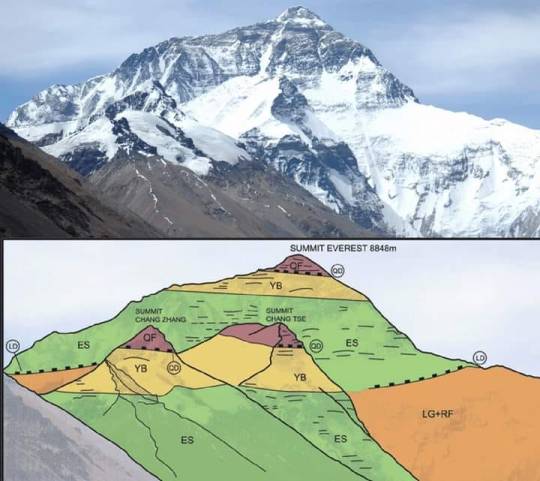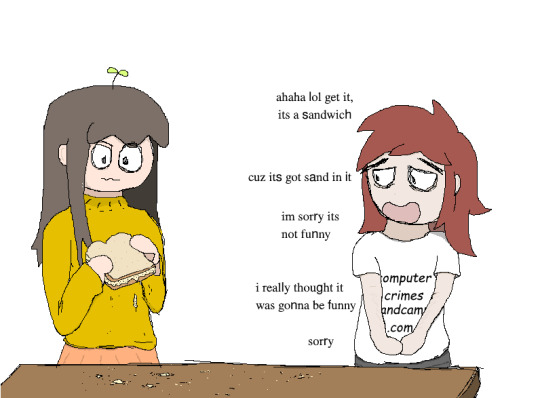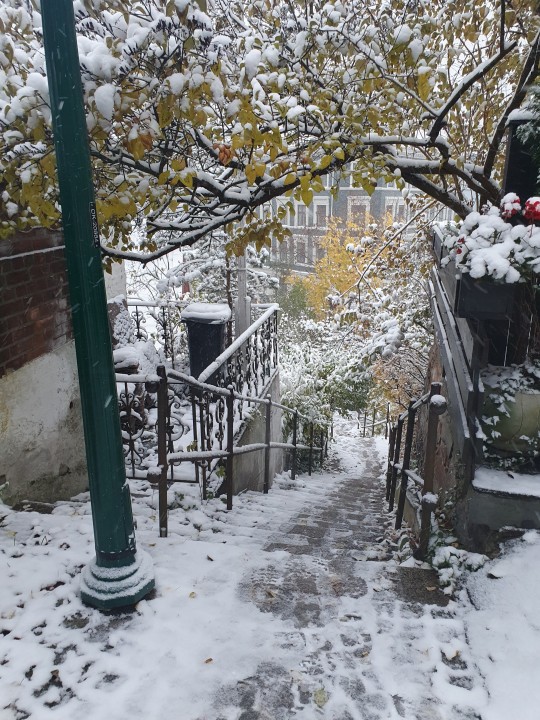#sedimentology
Explore tagged Tumblr posts
Text
588 notes
·
View notes
Text
New video!
There's new(ish) video up on youtube giving a quick guide to sandstones. This is the same video I uploaded last year, but I've cleaned the audio up so that you can actually hear what I'm saying now!
You can check it out below
youtube
#geologyjohnson#geology#precambrian#archean#sedimentology#sediments#sediment#sedimentary rock#sandstone#siltstone#silicified#Youtube
10 notes
·
View notes
Text





6 notes
·
View notes
Text



Some recent microscope photos! First two are sand and the eyeball lookin one is fossil sponge :)
7 notes
·
View notes
Text




Here are some ripple marks from a beach in the Northwest Scottish Highlands! There’s a chance that these ripple marks will be preserved like this and become sedimentary structures that we can see as cross-bedding in an outcrop someday!
#geology#rocks and minerals#rocks#sediment#sedimentary geology#sedimentary rock#northwest highlands geopark#sedimentary structures#ripple#ripple marks#I love sed geology sm and I get judged for it all the time by my peers#sed geologist#sedimentology
5 notes
·
View notes
Text

Source: LEARN Geology
𝗠𝗮𝗿𝗶𝗻𝗲 𝗟𝗶𝗺𝗲𝘀𝘁𝗼𝗻𝗲: 𝗧𝗵𝗲 𝗛𝗶𝗴𝗵𝗲𝘀𝘁 𝗥𝗼𝗰𝗸𝘀 𝗶𝗻 𝘁𝗵𝗲 𝗣𝗹𝗮𝗻𝗲𝘁
Everest Range, 𝗡𝗲𝗽𝗮𝗹 and 𝗧𝗶𝗯𝗲𝘁, 𝗖𝗵𝗶𝗻a 27°59'17"N / 086°55'30"E
𝙂𝙚𝙤𝙡𝙤𝙜𝙞𝙘𝙖𝙡 𝙋𝙚𝙧𝙞𝙤𝙙:
Middle 𝗢𝗿𝗱𝗼𝘃𝗶𝗰𝗶𝗮𝗻 (𝗗𝗮𝗿𝗿𝗶𝘄𝗶𝗹𝗶𝗮𝗻)
𝘿𝙚𝙨𝙘𝙧𝙞𝙥𝙩𝙞𝙤𝙣: Mount Everest is 𝗘𝗮𝗿𝘁𝗵'𝘀 𝗵𝗶𝗴𝗵𝗲𝘀𝘁 𝗺𝗼𝘂𝗻𝘁𝗮𝗶𝗻 above sea level, located in the Mahalangur Himal sub-range of the Himalayas. The China–Nepal border runs across its summit point. Its elevation of 𝟴,𝟴𝟰𝟴.𝟴𝟲 𝗺 was most recently established in 2020 by the Chinese and Nepali authorities.
𝗚𝗲𝗼𝗹𝗼𝗴𝗶𝗰𝗮𝗹 𝗗𝗲𝘀𝗰𝗿𝗶𝗽𝘁𝗶𝗼𝗻:
The 𝘀𝘂𝗺𝗺𝗶𝘁 of Mount Everest, the 𝗵𝗶𝗴𝗵𝗲𝘀𝘁 𝗽𝗼𝗶𝗻𝘁 on Earth, was a 𝘀𝗲𝗮 𝗳𝗹𝗼𝗼𝗿 once. 𝗜𝘀𝗻'𝘁 𝘄𝗼𝗻𝗱𝗲𝗿𝗳𝘂𝗹?. The highest rock on Earth, marking the summit of Mount Everest, are 𝗢𝗿𝗱𝗼𝘃𝗶𝗰𝗶𝗮𝗻 𝗟𝗶𝗺𝗲𝘀𝘁𝗼𝗻𝗲𝘀, deposited in a warm, shallow water sea some 𝟰𝟱𝟬 𝗠𝗮 𝗮𝗴𝗼.
These rocks deposited in an 𝗮𝗻𝗰𝗶𝗲𝗻𝘁 𝗧𝗲𝘁𝗵𝘆𝗮𝗻 𝗢𝗰𝗲𝗮𝗻 were thrust and 𝘂𝗽𝗹𝗶𝗳𝘁𝗲𝗱 into their present commanding position when 𝗜𝗻𝗱𝗶𝗮𝗻 𝗽𝗹𝗮𝘁𝗲 𝗰𝗼𝗹𝗹𝗶𝗱𝗲𝗱 with the 𝗔𝘀𝗶𝗮𝗻 𝗰𝗼𝗻𝘁𝗶𝗻𝗲𝗻𝘁 some 𝟱𝟱 𝗺𝗶𝗹𝗹𝗶𝗼𝗻 𝘆𝗲𝗮𝗿𝘀 𝗮𝗴𝗼.

𝗤𝗙: 𝗤𝗼𝗺𝗼𝗹𝗮𝗻𝗴𝗺𝗮 𝗙𝗼𝗿𝗺𝗮𝘁𝗶𝗼𝗻 (𝗘𝘃𝗲𝗿𝗲𝘀𝘁 𝗹𝗶𝗺𝗲𝘀𝘁𝗼𝗻𝗲𝘀): It is the un-metamorphosed layer of limestone here called ‘QF’ for 𝗤𝗼𝗺𝗼𝗹𝗮𝗻𝗴𝗺𝗮 𝗙𝗼𝗿𝗺𝗮𝘁𝗶𝗼𝗻, which forms the 𝘀𝘂𝗺𝗺𝗶𝘁 of Everest. It is separated from the underlying Yellow Band layer by a low angle detachment fault.
𝗬𝗕:𝗬𝗲𝗹𝗹𝗼𝘄 𝗕𝗮𝗻𝗱: This is the layered bedding. It is a limestone, formed from a shallow marine sediment, heated to become a 𝗺𝗮𝗿𝗯𝗹𝗲.
𝗘𝗦: 𝗘𝘃𝗲𝗿𝗲𝘀𝘁 𝗦𝗲𝗿𝗶𝗲𝘀: It consists of 𝘀𝗲𝗱𝗶𝗺𝗲𝗻𝘁𝗮𝗿𝘆 rock which has been metamorphosed at reasonably high temperatures. It is separated from the underlying layer by a low angle almost horizontal fault.
𝗥𝗙: 𝗥𝘂𝗻𝗴𝗯𝗼𝗸 𝗳𝗼𝗿𝗺𝗮𝘁𝗶𝗼𝗻: The Rungbok Formation consists of ‘LG’ Leuco- granite and gneiss.RF is a gneiss: rock partly melted and metamorphosed under high temperatures.
𝙁𝙤𝙨𝙨𝙞𝙡𝙨:
These rocks still contain the fossils of marine animals such as 𝗕𝗿𝗮𝗰𝗵𝗶𝗼𝗽𝗼𝗱𝘀, 𝗖𝗼𝗻𝗼𝗱𝗼𝗻𝘁𝘀 and 𝗖𝗿𝗶𝗻𝗼𝗶𝗱𝘀 that occupied tropical habitats during one of the most 𝗶𝗺𝗽𝗼𝗿𝘁𝗮𝗻𝘁 𝗶𝗻𝘁𝗲𝗿𝘃𝗮𝗹𝘀𝗹𝘀 in 𝗘𝗮𝗿𝘁𝗵'𝘀 history, the 𝗚𝗿𝗲𝗮𝘁 𝗢𝗿𝗱𝗼𝘃𝗶𝗰𝗶𝗮𝗻 𝗕𝗶𝗼𝗱𝗶𝘃𝗲𝗿𝘀𝗶𝗳𝗶𝗰𝗮𝘁𝗶𝗼𝗻 𝗘𝘃𝗲𝗻𝘁 (𝗚𝗢𝗕𝗘).
#himalayan#mounteverest#ordovician#limestone#nepal#india#tibet#indianplate#eurasianplate#geology#thrust#stratigraphy#sedimentology#petrology#structuralgeology#tethys#earthscience#iugs#unesco#geoheritage#knowledge
34 notes
·
View notes
Text

Raindrops in Sediments
One of the rarest geological phenomena are sedimentary structures that form in seconds and are no longer stable immediately afterwards. While others represent sedimentation periods of millions of years, such as deep-sea sediments. Here is a recent form of this: raindrop impacts in the nordern sea plage sand. As soon as the sand dries, the cohesion between the grains decreases and the mini impact structures are destroyed. Fossil I have found some of this rain drop phenomena in tuff and in claystones too.
#sedimentology#geology#original tumblr photographers#nature#earth#grains#rain drops#ggg#nordern sea#Plage#grein Size#Strukturen
2 notes
·
View notes
Text
Who on this planet would ever design a second year sedimentology course where ALL of the depositional environments and events are only explained and described in full at the END?!
Anyway wish me luck on this final. Ugh.
4 notes
·
View notes
Text

#sandwich#food#foodporn#sand#sandporn#dune#sediment#sedimentology#this was a band some guy i knew a few years ago had. unfortunately idk what happened to him#a lot of these are old comics i made around 2020-2021 but never uploaded publicly
2 notes
·
View notes
Text
geologists checking if its silt or clay.

Big chomping mouthful of fucking soils
44K notes
·
View notes
Text
Went to the Grand Canyon for spring break, this view made me cry with joy.
45 notes
·
View notes
Text
The secrets of shale
New video online now. Learn the secrets of shale! See some nice pictures of rocks! Watch me miss pronounce everyday words!
youtube
#geology#geologyjohnson#palaeontology#precambrian#fossilfriday#fossils#fossil#paleontology#acritarch#archean#shale#mudstone#sedimentary rock#sedimentology#fracking#hydrocarbons#Youtube
6 notes
·
View notes
Text

Echinoderms, bryozoans and algae (something like that, I just know I want to kill myself if I stand in front of white light one more day)
2 notes
·
View notes
Text



#spent four hours to draw these things#maps#litoral geography#sedimentology#frick you uni#dune systems#a beach profile#will translate tomorrow#fic material
0 notes
Text
Job - Alert 🎓

🔬 New Postdoc Opportunity at GFZ Helmholtz-Zentrum für Geoforschung! 🌍
Join Germany's national centre for solid Earth research – GFZ – and help us "take the pulse of our Earth to safeguard a habitable planet."
We’re hiring a Post-Doc (f/m/x) in our Section Inorganic and Isotope Geochemistry to explore alteration footprints of base metal systems in fine-grained rocks – with field projects in Germany and Canada! 🇩🇪🇨🇦
🧪 What awaits you:
✔️ Cutting-edge research on sedimentology, geochemistry & mineralogy
✔️ 3D modelling (e.g. Leapfrog), isotopic & lithogeochemical analysis
✔️ A collaborative, international environment at GFZ in Potsdam
✔️ Full-time, 3-year position starting Sept 2025
🔗 Apply by 23 June 2025: https://www.academiceurope.com/job/?id=7638
#hiring#jobs#science#jobseekers#postdoc#geochemistry#earth science#sedimentology#geoscience#mineralogy
0 notes




